April means hummingbirds in South Texas! We’re lucky to see a few pretty much year-round, but April and September are when we see big migration surges. If you want to attract and enjoy hummingbirds, feeders can help, but plants are key. Did you know that most plants which are pollinated by hummingbirds have evolved over time to replenish nectar at night while hummingbirds are least active? That means hummingbirds can feed on the same flower over and over again without depleting the nectar! Here are 10 of our favorite plants for attracting and feeding hummingbirds – plant these now!
1. David Verity Cuphea
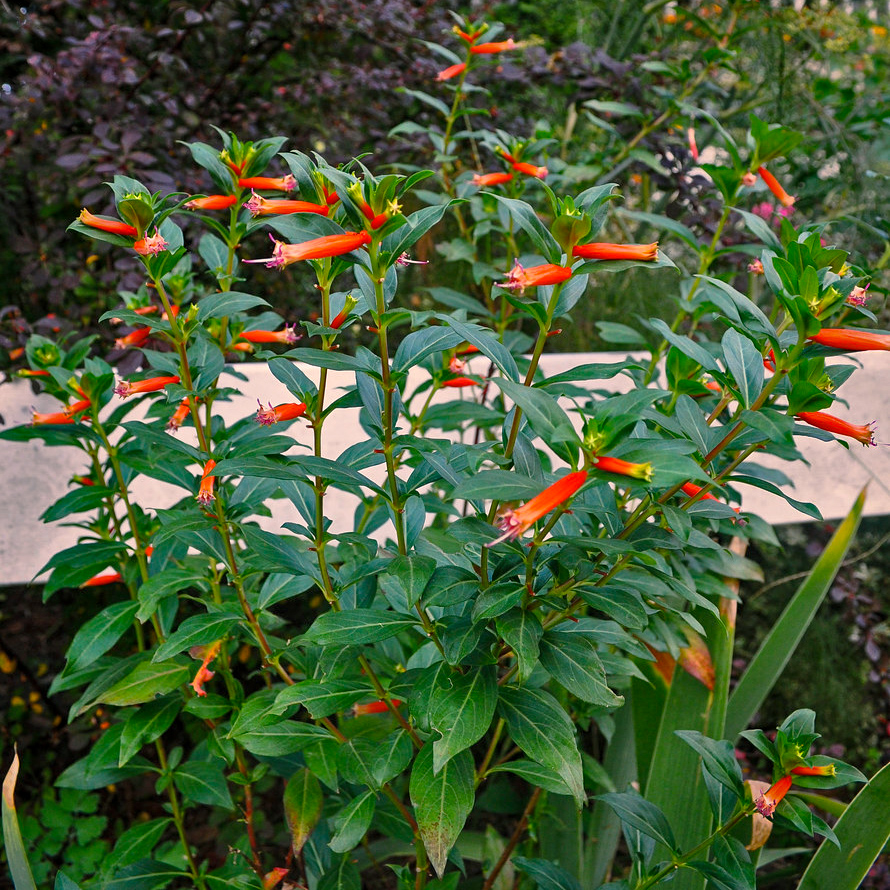
There are many different Cuphea (aka cigar plant) varieties, but ‘David Verity’ is our favorite for our area. Grows well in full-sun to partial shade, gets about 2′ tall and 2′ wide, and keeps on blooming through the summer! Like a lot of plants on this list, those blooms are perfect for little hummingbird beaks.
2. Native Turk’s Cap
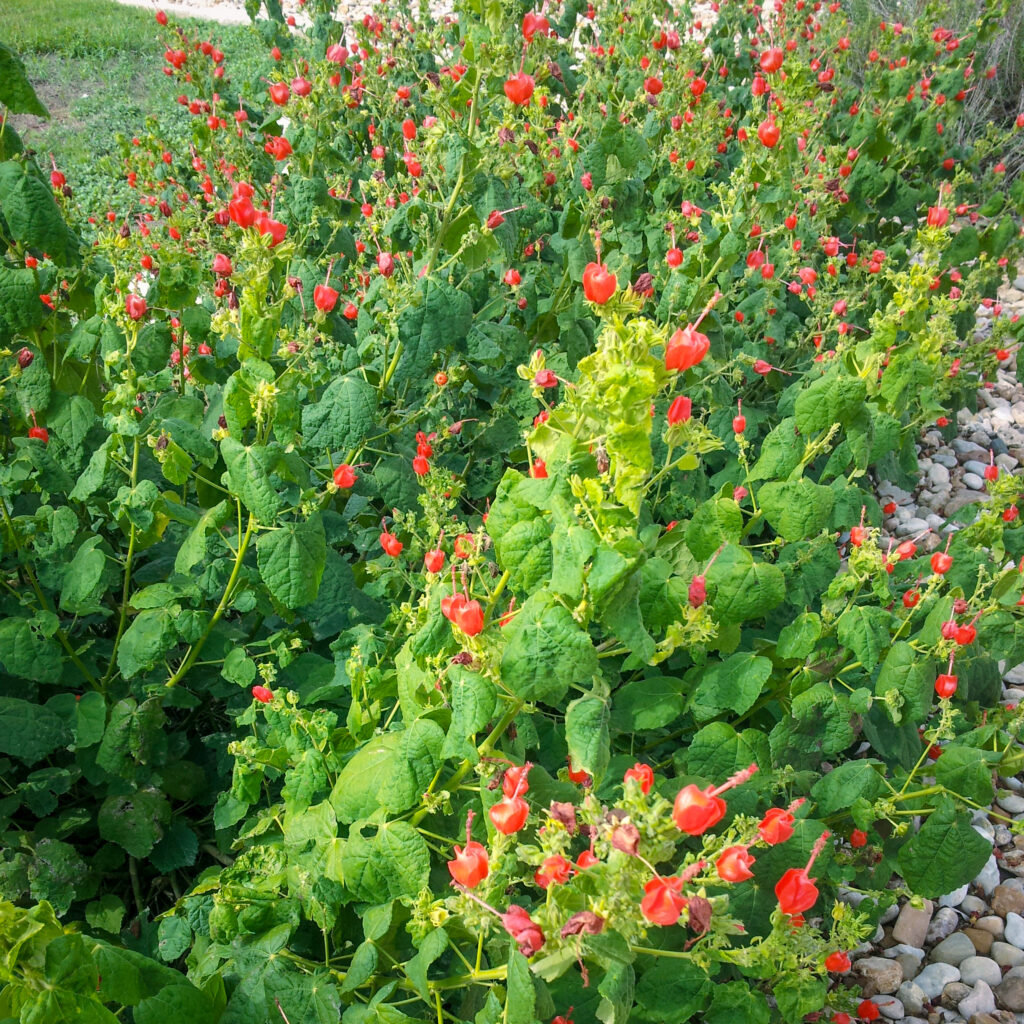
Turk’s Cap is one of our all around favorite plants for the South Texas landscape. Lots of different birds, including hummingbirds, absolutely love it. Turk’s Cap grows well in shade, partial sun, under trees, in sandy soil, in clay soil…you get the idea. Such a versatile plant! Hummingbirds feast on the nectar, then other birds enjoy the fruit in the fall. Turk’s Cap is part of the mallow family and all parts of the plant are edible for humans too.
3. Hummingbird Plant aka Dicliptera

As the name implies, this is one of THE hummingbird plants! If you haven’t noticed yet, most plants on this list have red blooms. That’s because hummingbirds locate nectar by sight, not by smell. They tend to favor red and orange, although there are some exceptions. Hummingbird Plant does well in full sun and gets to be about 3′ tall and 3′ wide. Again – notice that bloom shape. Perfect straws for hummingbirds!
4. Bottlebrush
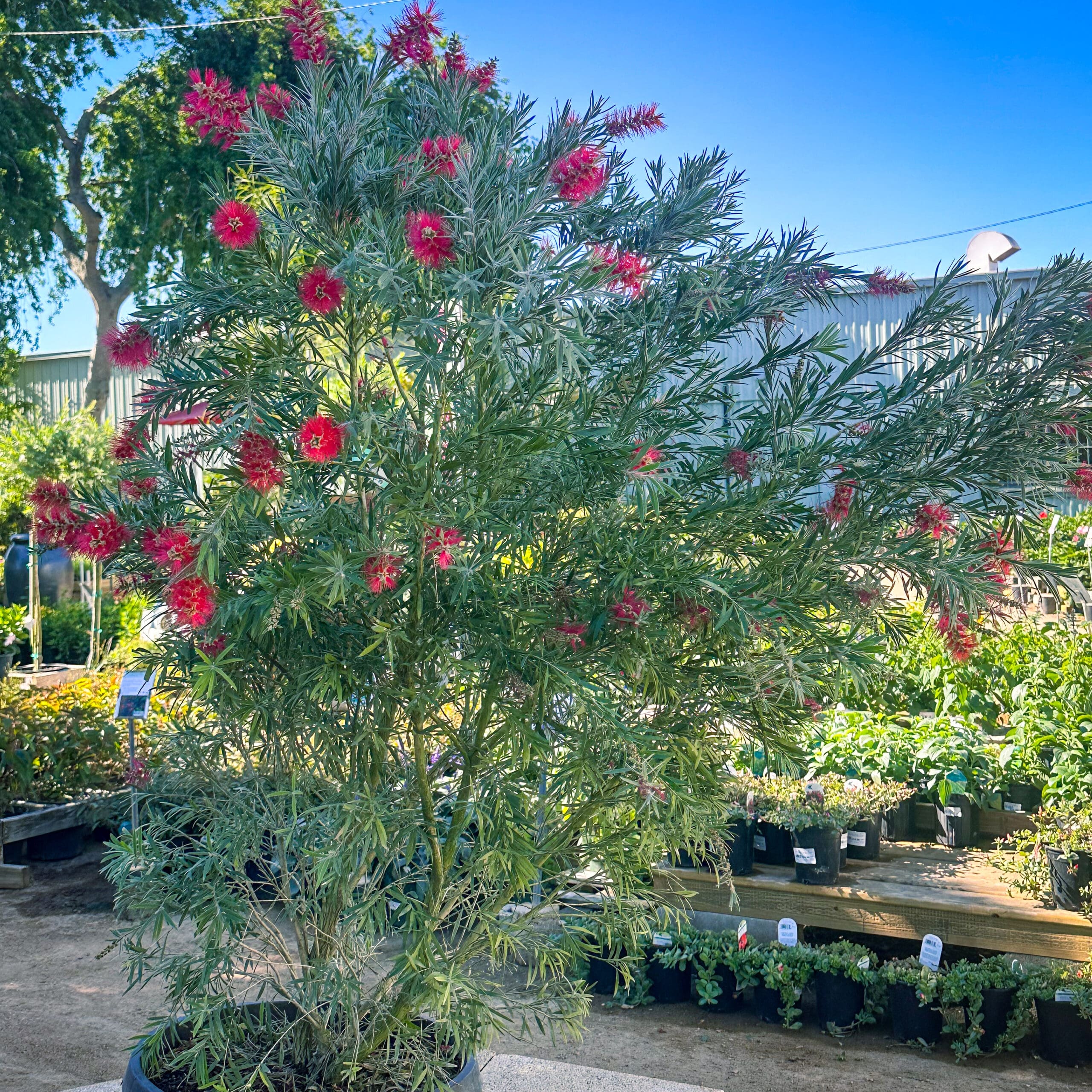
Bottlebrush come in a lot of shapes and sizes – the dwarf shrub variety all the way up to mid-sized trees. Hummingbirds will flock to them all! If you take a close look at the blooms, you can see how juicy and filled with nectar they are.
5. Red Pentas
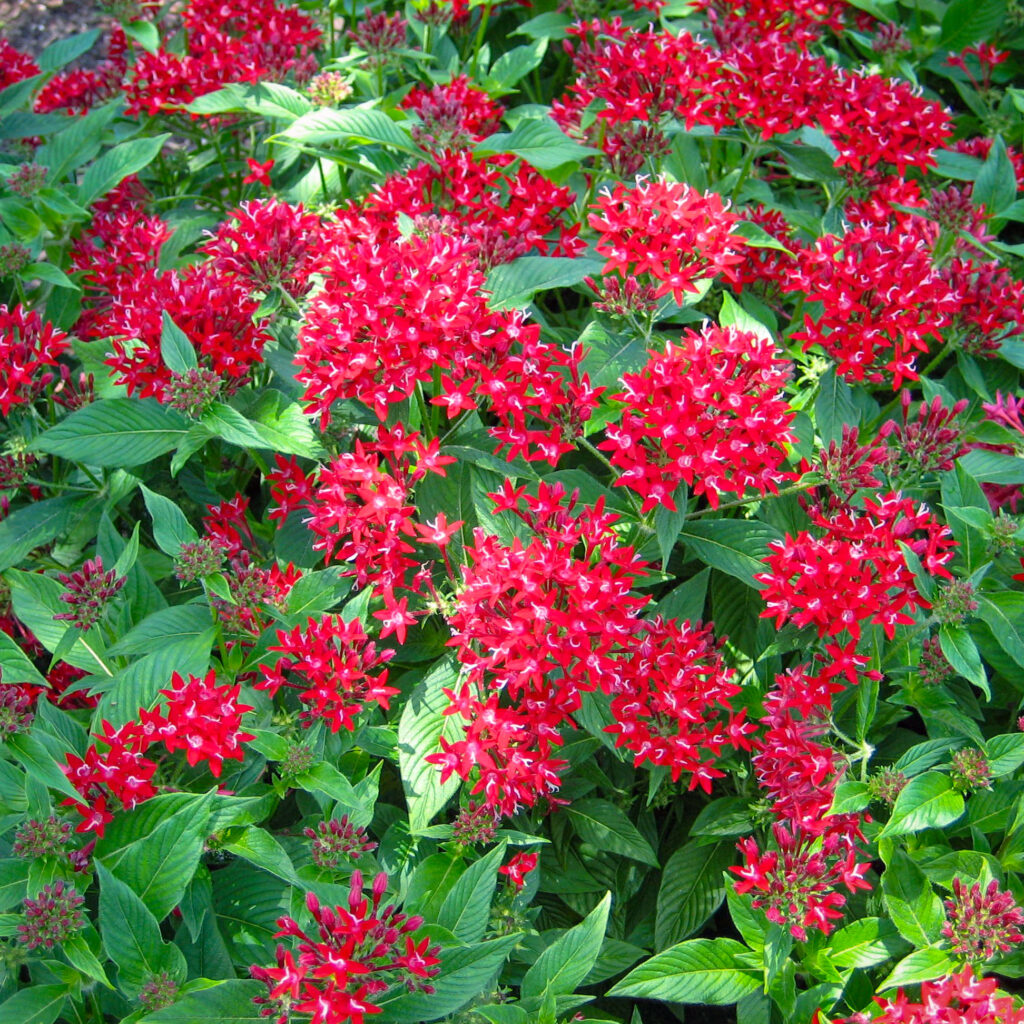
We grow pentas as annual flowers here in South Texas, and the timing for planting them aligns perfectly with the April and September hummingbird migration. They come in many colors, but hummingbirds prefer the red variety.
6. Firecracker Plant aka Russelia
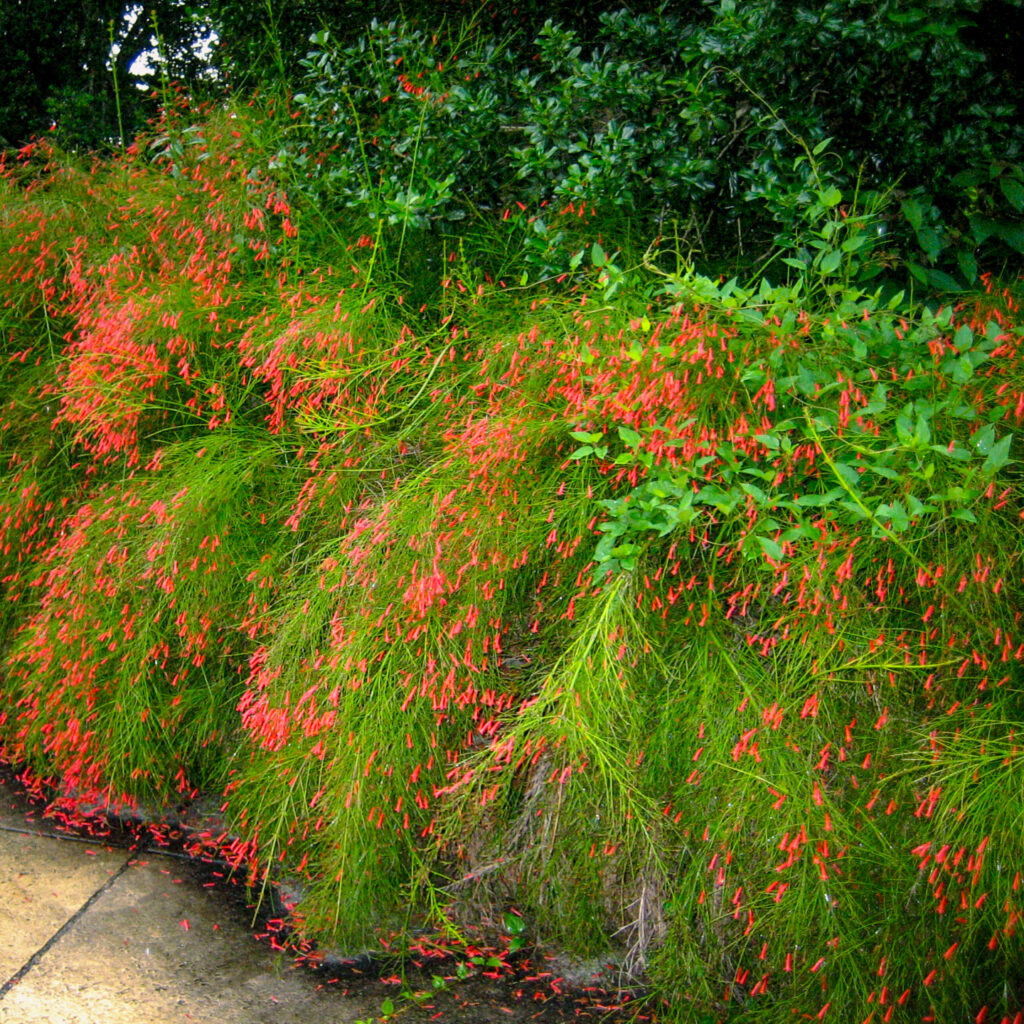
If you’re looking for a summer-tough, fast-growing, shaggy, wild-looking plant that attracts tons of hummingbirds…you found it! Firecracker Plant gets 3-5′ tall and wide and is a tried and true favorite here in South Texas – reliable and drought-tolerant.
7. Native Flame Acanthus
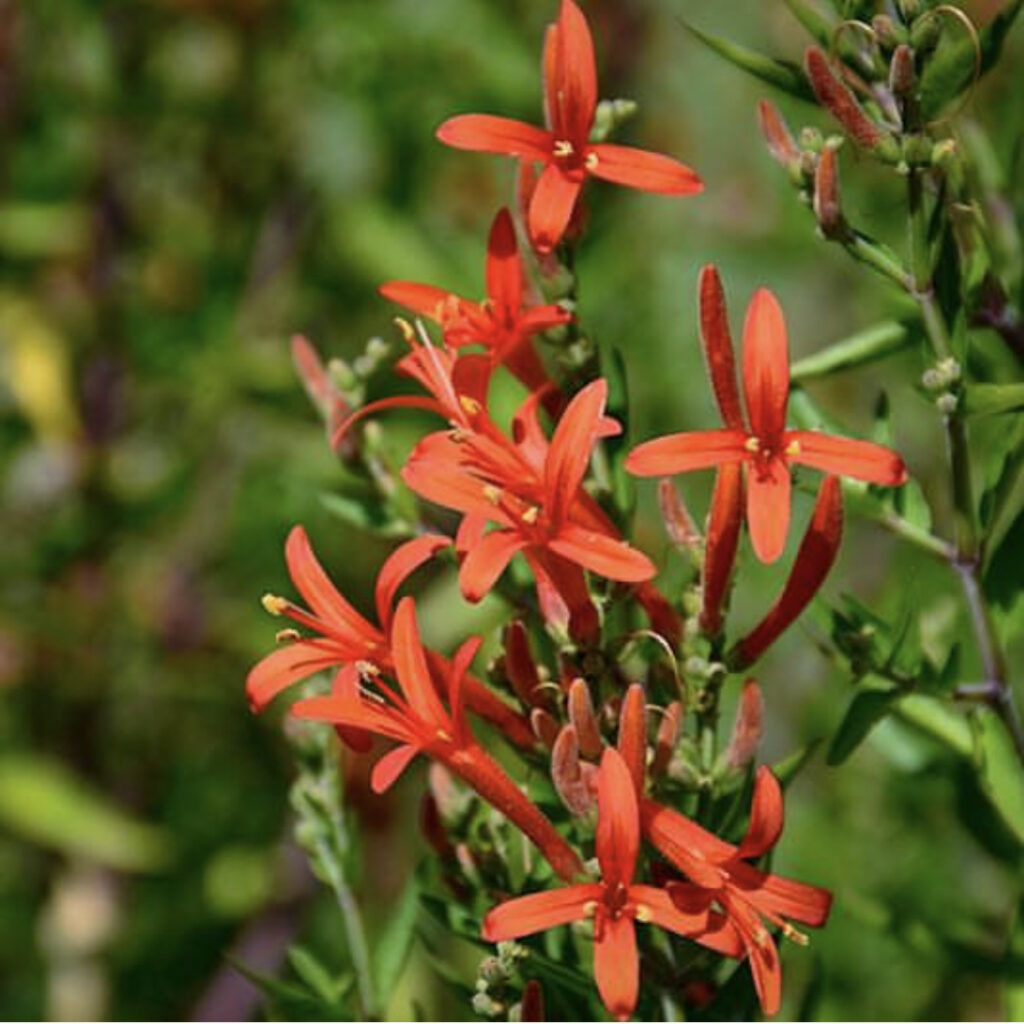
Talk about a tough plant! Our Texas native Flame Acanthus aka Hummingbird Bush survives freezes, summer temps, and long periods of no rainfall. Make sure you give it some space since it wants to be about 5′ tall and 5′ wide. With so many blooms, Flame Acanthus can accommodate a whole hummingbird convention!
8. Duranta erecta
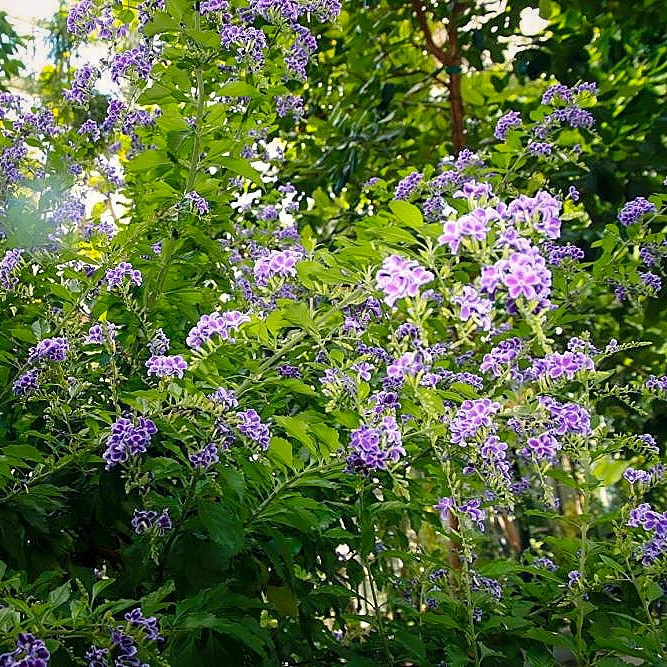
You’ve made it to the only non-red/orange plant on our list! These blooms are not like the others – they’re purple and white and they’re not tubular. Nonetheless, hummingbirds make frequent stops for Duranta. These small trees typically grow to 12-15′ tall with a spread of about 10′ here in South Texas. Lots of room for lots of blooms!
9. Firebush (Hamelia patens)
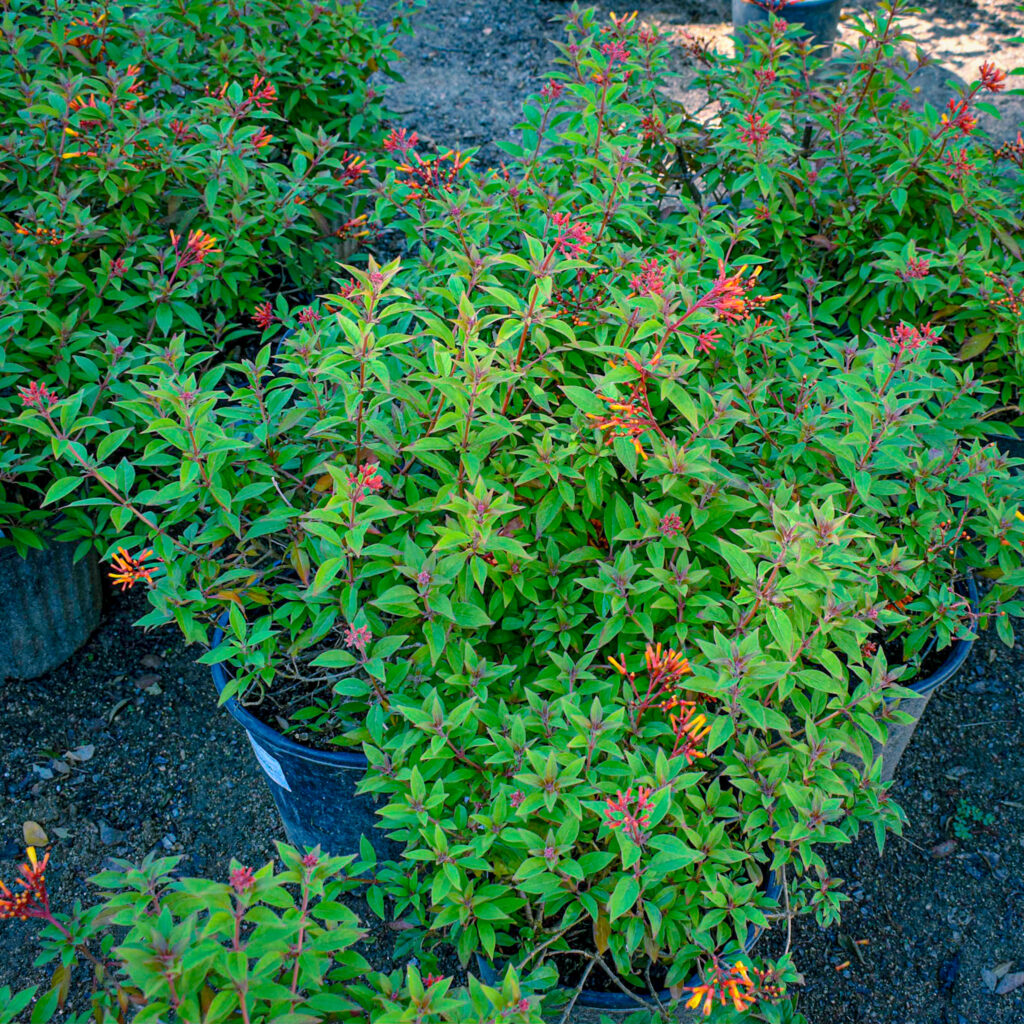
Firebush is another one of the larger specimens on our list. They get about 8-10′ tall and 6-8′ wide and they grow FAST! They’ve done very well through recent freezes. The foliage dies back, you prune it, then by late spring you’ve got a big full plant again. Firebush is easy on water and can handle hot sunny locations just fine.
10. Red Salvias!

If you plant Texas native Salvia greggii, you might have hummingbirds on it before you finish filling up the hole. This is true for so many of the different red salivas like Summer Jewel, Roman Red, native Salvia coccinea, Hot Lips, and more. Hummingbird magnets!
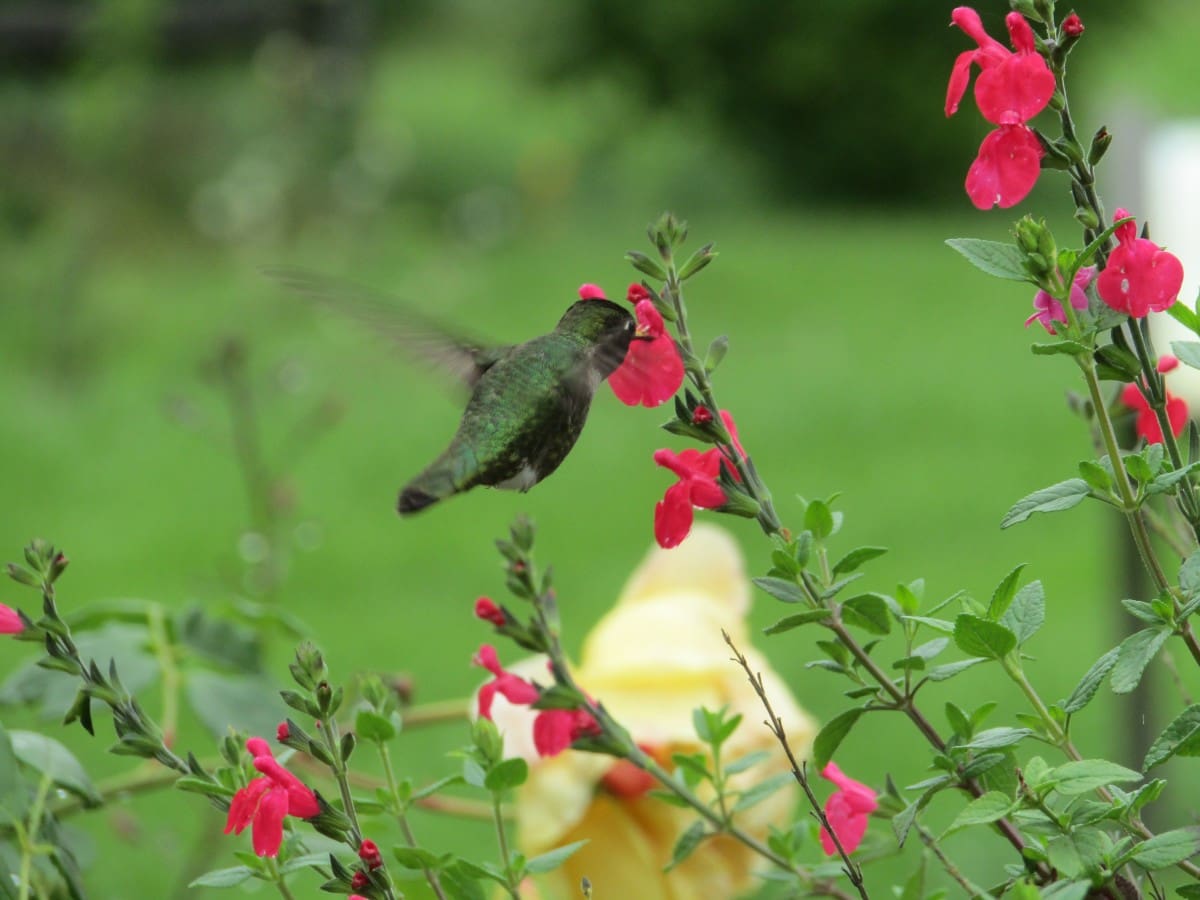


Reader Interactions